The Mobile Contrarian: iOS 6 and its disappointing "new" features
This article may contain personal views and opinion from the author.

In case you missed yesterday's news from pretty much every tech source around, iOS 6 was announced, and Apple finally showed us all of the upgrades and features that will be available when it launches in the fall. Now, before we even start, we'd like to remind you out there, especially those of you who are already diving towards the comment section, that offering a critique, especially one that you don't agree with, is not bias. It's our job to look past the marketing and hype, and get down to the real information that has been presented, and as far as Apple's iOS 6 announcement, once you get bast the marketing and hype, it was a pretty disappointing reveal.
We understand that Apple lives and dies by its marketing, so the team has to have certain key points to hit, which make the whole reveal seem more impressive than it is, but it's really just smoke. 100 million businesses in Apple Maps? That sounds very impressive, but only because we've never heard statistics on how many places exist in the databases of competitors like Google Maps or Nokia Maps. For all we know, 100 million businesses may actually be a pretty small amount comparatively. And then, of course, we always have to keep in mind that Apple is far more likely to use the word "new" to mean "new for Apple".
Admittedly, Apple seems to be in a year where the really "new" stuff will be hardware based. Apple tends to focus one year on hardware (iPhone 3G, iPhone 4), and one year on software improvements (iPhone 3Gs, iPhone 4S). The trouble with that rotation is that every year, something will be disappointing. If Apple is going to carefully plan out software feature rollouts, it seems like it could stagger things better to make it more even from year to year. Of course, we fully expect to be writing another article very similar to this at the end of the month when Google shows off Android 4.1 Jelly Bean, because while Apple focuses on software one year and hardware the next, Google tends to focus on big UI and feature changes with one update (Froyo, ICS), and performance/under-the-hood enhancements the next (Gingerbread, and we're expecting Jelly Bean).
But, that is Apple's modus operandi: to deliberately hold back certain features in order to launch a more matured product. Conversely, Google loves betas, and will often launch something that is half-baked and matures with the feedback of users. Ultimately, you end up with similar feature sets, and the fact that Google releases first, or Apple releases a more complete solution, doesn't really matter all that much unless you prefer one approach to another. The trouble is that just because Apple holds back a feature doesn't necessarily mean that the aim was to mature the product behind the scenes.
For some of the new features in the iOS 6 update, Apple stuck with its usual philosophy of not releasing something until it's done. With that in mind, Siri got an update to add more functionality. This update makes sense, and we have no issues with it. It's a great update to a relatively new product that should make Siri better; and, given that Siri is just a year old, the wait for this update was reasonable and not a big deal. Other updates, like the Accessibility tweaks we covered earlier, look to be amazing updates for a small, but important segment of the public, and Apple should probably be commended more than it will be for some of these improvements.
Overdue features
The troubles we have are with the other updates included in iOS 6. Each one is coming too late to make us all that impressed, and so the best response we can really muster is "Finally!" FaceTime over 3G? Finally! Add images from the Email app? Finally! Facebook integration? Finally! What is there to get really excited about here? These are surely nice features that iOS users will appreciate, but were they really updates that needed to take this long to come through?
FaceTime hit the market almost 2 years ago, and even back then, video chat over mobile data was being done on other platforms via other services. We even played around with letting iPhone 4 friends FaceTime chat with each other through the mobile hotspot created with an Android device, and it worked great. Apple will surely have its PR reasoning for delaying this feature, and we don't know why it took so long, but we do know that the delay likely wounded FaceTime's chances of seeing any meaningful adoption. Instead, users have stuck with options like Skype, which not only had the name recognition, but brought in video chat over 3G at the end of 2010 on iOS, while FaceTime users were left waiting.
VIPs in Email is another feature which will be nice, but it's nothing new or revolutionary, and is essentially a feature that has been available in Gmail since 2010 (under the name "Priority Inbox", which we will admit is not as catchy a name as Apple's offering.) Additionally, you can now add images to an email from the compose window rather than having to start in the Photo app, which was a missing feature that absolutely boggled us. There is no real reason why this feature didn't exist before now, and it really feels like Apple just forgot that this would be a nice option to have (and one that should never have been missing past iOS 2 or 3 at the very latest). We don't normally think of Apple as a company that would drop the ball like that, but frankly we like that idea better than the idea that Apple knew it should have an option to attach images to emails in the Email app, but just didn't bother adding it until now.
Held back by spite
Then, we get into the "new" features, which were delayed due to a mixture of pettiness and competition. Facebook integration was supposed to happen with iOS 4, but didn't, and the general theory is that Steve Jobs was angry about Facebook pulling out of Ping, and so shut out the company from iOS. Of course, whatever the reasoning, it's just unacceptable. We understand wanting to have a matured product, but when it comes to basic features like the ability to share content, there is no excuse any more. Apple shouldn't be adding in sharing integration service by service, one each year. Getting LinkedIn integration with iOS 7, and Pinterest integration with iOS 8 is unacceptable. No matter what fanboys will say about "stealing", Apple needs a solution similar to Android's share menu, which will allow integration on the fly, even if it isn't so-called "deep integration". Users will be fine without having Pinterest contacts synced if Apple doesn't want to open up too many APIs, but just being able to easily post a story from one app to another shouldn't be such a struggle.
And, of course, that brings us to the biggest announcement of the day: Apple's new Maps. Apple has finally done away with Google, and in the process has also finally added features that should have never gone this long without a solution. We have no idea whether it was Apple that didn't allow Google to update the Maps app for iOS, or Google who withheld the updates in order to give Android a competitive advantage. The most popular rumor seems to be that Apple wanted to redesign the Google Maps UI, but Google wouldn't allow it, so no updates were made. The bottom line is that Maps in iOS has been pretty much ignored as far as updates for a long time. So, Apple's Maps ends up being compared to Google Maps from years ago, rather than what's available now on Android. And, that means that it is somehow an amazing feat that Apple has added turn-by-turn navigation to the iPhone (finally!) (Side note: the announcement of Apple working with car companies to integrate Siri into vehicles may well turn into the least hyped, but best overall announcement of the day.)
We fully understand that Apple wanted to be rid of Google Maps if for no other reason than because Google had become a competitor in the mobile space. Apple cut Google Search from the loop with Siri, and took away the Google name from the Maps app and search bar, and has now dropped Google Maps completely. Of course, the time crunch went against Apple. As we said when we saw Apple's Maps plans really forming, Google already had a huge head-start in this field. This forced Apple's hand. The company could either allow Google Maps for iOS to be updated and keep using Google Maps until Apple's Maps were more mature, or it could reduce expectations by keeping Google Maps from updates, and introducing a competent alternative. From a business standpoint, what Apple did makes sense, but from a user perspective, it's troubling to see such a basic feature like turn-by-turn navigation to take so long. And, time will tell just how long it keeps Google Maps off the platform. We'd expect Google to be submitting apps to the iTunes App Store fairly soon, and unless Apple is willing to kick out all of the current turn-by-turn apps under the anti-competitive rule of not duplicating iOS features, Google should get through.
The still missing features
Overall, iOS 6 should prove to be a nice enough update, more so for new iPad users who will finally get full access to Siri. Although, let's not forget that iPad 1 users won't even get iOS 6, and iPad 2 users will get it, but won't get Siri (just remember: Android is "fragmented", not iOS!) Apple Maps looks like a nice enough app, and the Siri improvements also look to boost the functionality, but there was no killer feature for iOS 6. iOS 4 had multitasking, iOS 5 had the Notification Center, iMessages, iCloud, and eventually Siri, but iOS 6 doesn't have that really amazing feature.
We were hoping that it would finally be an answer to widgets/Live Tiles, especially given the hiring of Jan-Michael Cart, the designer who came up with such an amazing, elegant, and very Appley concept for an iOS dynamic icon system, as well as a potential widget solution. Unfortunately, neither of those solutions made it into iOS 6, so it looks like another year of waiting at least before iOS users get some sort of widget option.
Apple doesn't always like to introduce new features right after a competitor has introduced something similar, and when it does, it tends to add significant bonus options. For example, the new options on incoming phone calls in iOS 6 look like quite like Android 4.0's new quick replies, but the addition of the "remind" and "Do Not Disturb" options add enough value as to make it okay. Still, we think that iOS needs to have something similar to the Windows Phone People app (sorry Android, but you need to have a working People app to be included here). Apple has the supposed "deep integration" with Twitter and Facebook, but that doesn't include an option to see your contacts' posts in an easy way.
Either of those two ideas could have been the real hook to make iOS 6 more interesting. Even a couple smaller updates that people didn't expect would have been nice enough to make the overall announcement a bit better. We are getting a redesign of the iTunes App Store, which is nice, but there's still no easy way to test apps before buying, or return apps that are unwanted. That could have been a pretty nice addition. Even allowing for different sound profiles would have been nice.
iOS 6 looks like a nice enough update, and the added features should make current iOS users pretty happy, but we can't imagine these being the features that sway disgruntled Android users to the iOS shores. When the biggest update is a Maps app, which is trying to live up to maps offerings from 2-3 years ago, it's hard to get excited for this update. Luckily, the iPhone 5 should make up for this disappointment.

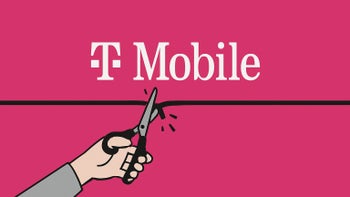
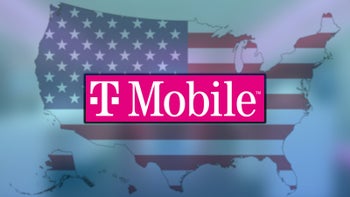

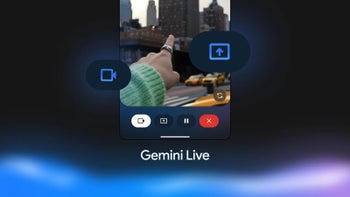
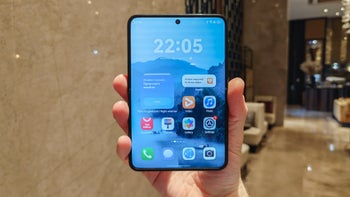






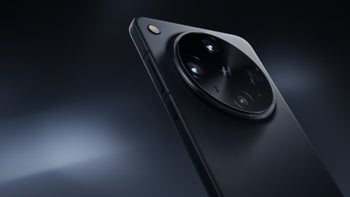
Things that are NOT allowed: